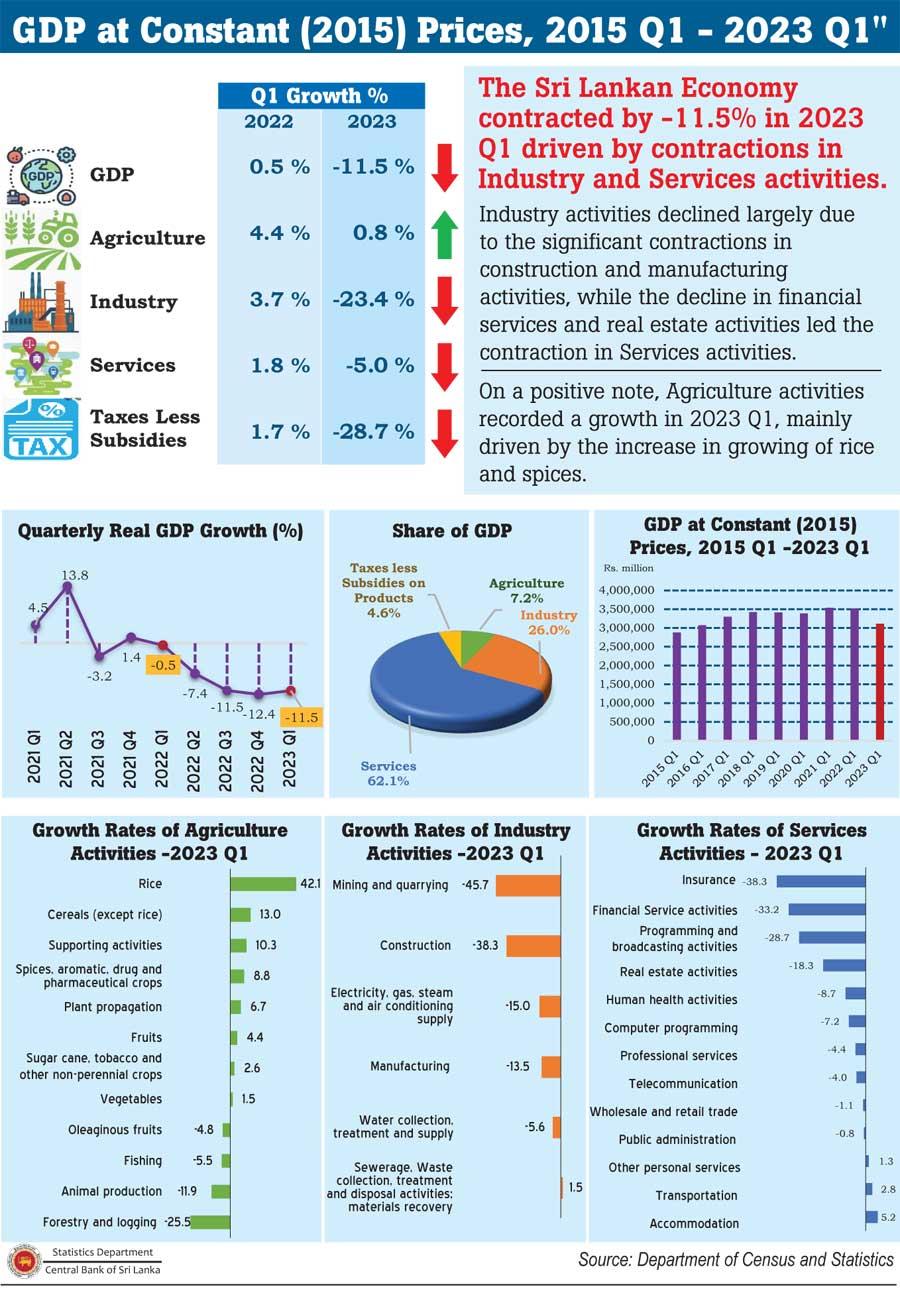Donald Trump’s top economic advisor claims the President has weaponised tariffs to ‘persuade’ other nations…
Govt.’s Free Market Policy could Push the Economy over the Cliff Ahilan Kadirgamar
The economic suffocation in our country has been all too clear for anyone who opened their eyes to the predicament of the working people. And now, for even those who hide behind data, there is ample evidence of the tremendous economic depression, where the contraction has not just pushed the economic activity back by years but by a decade. Unless there is a major shift in the economic policy trajectory, the decade ahead is also likely to be lost.
Rising malnutrition, increasing school drop-outs and widespread youth unemployment signify a lost generation likely to leave behind deep social and economic scars. However, the Wickremesinghe-Rajapaksa government’s policies are solely focused on implementing the IMF package with austerity measures and reinforcing the free market trajectory, and on that path pushing the economy over the cliff into a free fall.
GDP contraction
A few days ago, the Census and Statistics Department released the First Quarter 2023 GDP data, which highlighted a devastating contraction of the economy by 11.5%. What is even more worrying is that the industrial sector has contracted by 23.4%. This trend is not all that surprising given the collapse of many Small and Medium Enterprises, and the widespread loss of jobs in construction in particular. The Daily Mirror reported on June 7 of one million jobs lost in the construction sector as revealed to the Sectoral Oversight Committee.
The 11.5% GDP contraction last quarter reflects that economic production in the country is close to what it was in the first quarter of 2016. And if we look at the industrial sector, it is over 11% below the level of production during the same quarter in 2015, which is the base year used for the data. In other words, the trend now reflects industrial production that is a decade behind.
Deliberate measures
Such severe economic contraction is not just the consequence of the long unfolding economic crisis, but also the deliberate measures taken by the policy establishment over the last fifteen months. Austerity measures have greatly undermined industrial activities; cuts to all subsidies despite skyrocketing prices due to the sudden devaluation of the rupee last year, market pricing fuel making transport unaffordable, and extremely high interest rates making working capital inaccessible for small businesses.
While the Government continues to claim that recovery is around the corner, the evidence above to the contrary shows that the tremendous losses will be impossible to reverse for years to come with even the best of policies. With more of the same policies of austerity, and without stimulus to the economy in the form of state support to critical sectors, the haemorrhage is likely to continue making the economic situation much worse.
On May 31, the Central Bank of Sri Lanka finally decided to reverse its stand of maintaining high interest rates, and brought down its policy rate from 16.5% to 14%. This lowering of interest rates, are too little too late, and even if the Central Bank continues to bring down interest rates near zero, Sri Lanka cannot dig itself out of the current crisis. The reason is that the country is now drowning in a full-blown economic depression, where after businesses close down or abandon production, it is much harder to resume their business activities. Moreover, given that the working peoples income streams have greatly declined, aggregate demand necessary to consume the production of businesses seeking to revive has also fallen.
This was the major lesson from the Great Depression of the 1930s. John Maynard Keynes, the most astute economist of that period pointed out that merely bringing down interest rates to fight a depression is like pushing on a string. Rather a complete change in policies including a major economic stimulus package by the Government with deficit financing coupled with redistribution through a wealth tax is a necessary first step. Furthermore, Sri Lanka needs to envision a new economy for itself changing its built environment, with for example affordable public transport and utilities, as well as self-sufficiency in its food system, amidst the now worrying food crisis that we could address by producing food with our resources. Such a vision is particularly important now as many developing countries like ours are sinking and the global economic order itself is unravelling.
The Government needs to take responsibility and it cannot hide behind the IMF any longer. For the IMF and the Western establishment, the suffering of 20 million people in Sri Lanka is collateral damage for attempting to revive their failed economic model that has depended on exploiting people in the Global South, starting with centuries of colonialism and continuing to our contemporary times. If the survival of the citizenry means tearing up the IMF agreement that is what the Government should do now.
The Government’s economic policies are unlikely to change until there are elections. However, the Wickremesinghe-Rajapaksa Government will avoid elections as long as it can with its authoritarian hold, knowing that there will be a real thrashing of the despicable regime at any election. Salvaging the economy in Sri Lanka now requires democratic moves that have to immediately begin with working people’s mobilisations and protests demanding the state to address its citizen’s most basic needs. The galvanisation of such a movement alone can create a progressive opposition leading to democratic change of representatives who care about the working people’s suffering and can rebuild an economy that addresses their needs.

